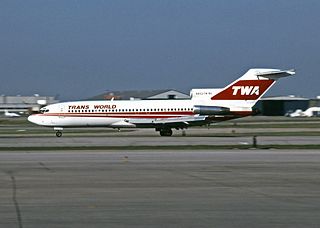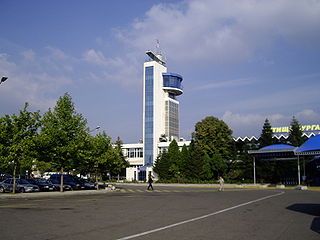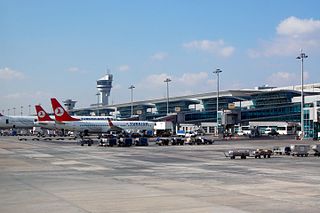
JAT Flight 367 was a McDonnell Douglas DC-9-32 aircraft which exploded shortly after overflying NDB Hermsdorf, East Germany, while en route from Stockholm, Sweden, to Belgrade, SFR Yugoslavia, on 26 January 1972. The aircraft, piloted by Captain Ludvik Razdrih and First Officer Ratko Mihić, broke into three pieces and spun out of control, crashing near the village of Srbská Kamenice in Czechoslovakia. Of the 28 on board, 27 were killed upon ground impact and one Serbian crew member, Vesna Vulović (1950–2016), survived. She holds the Guinness world record for surviving the highest fall without a parachute at 10,160 m (33,330 ft).

Vesna Vulović was a Serbian flight attendant who survived the highest fall without a parachute: 10.16 kilometres or 33,330 feet. She was the sole survivor after an explosion tore through the baggage compartment of JAT Flight 367 on 26 January 1972, causing it to crash near Srbská Kamenice, Czechoslovakia. Air safety investigators attributed the explosion to a briefcase bomb. The Yugoslav authorities suspected that émigré Croatian nationalists were to blame, but no one was ever arrested.

The Wall Street bombing was an act of terrorism on Wall Street at 12:01 pm on Thursday, September 16, 1920. The blast killed 30 people immediately, and another 10 later died of wounds that they sustained in the blast. There were 143 seriously injured, and the total number of injured was in the hundreds.

The 1985 Narita International Airport bombing was the attempted terrorist bombing of Air India Flight 301, which took place on June 23, 1985. A bomb hidden in a suitcase transiting through New Tokyo International Airport exploded at 06:19 23 June 1985 in a baggage handling room, killing two baggage handlers and injuring another four. The bomb exploded prematurely while the plane was still grounded. The attack at Narita was part of an attempted double-bombing orchestrated by Talwinder Singh Parmar, a Canadian national, and the Sikh terrorist organization, Babbar Khalsa. The bombs were made by Inderjit Singh Reyat.

Julienne Bušić is an American writer, activist, and the widow and co-conspirator of Zvonko Bušić. She was arrested with Bušić in 1976 after hijacking TWA Flight 355 and sentenced to life in prison, with early parole.

On 30 December 2006, a van bomb exploded in the Terminal 4 parking area at the Madrid–Barajas Airport in Spain, killing two and injuring 52. On 9 January 2007, the Basque nationalist and separatist organisation ETA claimed responsibility for the attack. The attack, one of the most powerful carried out by ETA, damaged the airport terminal and destroyed the entire parking structure. The bombing ended a nine-month ceasefire declared by the armed organisation and prompted the government to halt plans for negotiations with the organisation. Despite the attack, ETA claimed that the ceasefire was still in place and regretted the death of civilians. The organisation eventually announced the end of the ceasefire in June 2007.

The Glasgow Airport attack was a terrorist ramming attack which occurred on 30 June 2007, at 15:11 BST, when a dark green Jeep Cherokee loaded with propane canisters was driven at the glass doors of the Glasgow Airport terminal and set ablaze. The car's driver was severely burnt in the ensuing fire, and five members of the public were injured, none seriously. Some injuries were sustained by those assisting the police in detaining the occupants. A close link was quickly established to the 2007 London car bombs the previous day.

Miro Barešić was a Croatian émigré and paramilitant who in 1971 murdered a Yugoslav diplomat, Vladimir Rolović, in Sweden. He later served as a soldier in Paraguay and in the Croatian National Guard in 1991.
The Croatian National Resistance, also referred to as Otpor, was an Ustaša organization founded in 1955 in Spain. The HNO ran an armed organisation, Drina, which continued to be active well into the 1970s.

TWA Flight 355 was a domestic Trans World Airlines flight that was hijacked on September 10, 1976 by five "Fighters for Free Croatia", a group seeking Croatian independence from Yugoslavia.
The Orly Airport attack was the 15 July 1983 bombing of a Turkish Airlines check-in counter at Orly Airport in Paris, by the Armenian militant organization ASALA as part of its campaign for the recognition of and reparations for the Armenian genocide. The explosion killed eight people and injured 55.

Zvonko Bušić was a Croatian responsible for hijacking TWA Flight 355 in September 1976. He was subsequently convicted of air piracy and spent 32 years in prison in the United States before being released on parole and deported in July 2008.

The 2012 Burgas bus bombing was a terrorist attack carried out by a suicide bomber on a passenger bus transporting Israeli tourists at the Burgas Airport in Burgas, Bulgaria, on 18 July 2012. The bus was carrying 42 Israelis, mainly youths, from the airport to their hotels, after arriving on a flight from Tel Aviv. The explosion killed the Bulgarian bus driver and five Israelis and injured 32 Israelis, resulting in international condemnation of the bombing.

The Atatürk Airport attack, consisting of shootings and suicide bombings, occurred on 28 June 2016 at Atatürk Airport in Istanbul, Turkey. Gunmen armed with automatic weapons and explosive belts staged a simultaneous attack at the international terminal of Terminal 2. Three attackers and forty-five other people were killed, with more than 230 people injured. Monitoring group Turkey Blocks identified widespread internet restrictions on incoming and outgoing media affecting the entire country in the aftermath of the attack.
This article includes information on terrorist acts and groups in or against the Kingdom of Yugoslavia (1918–45) and Federal Yugoslavia (1945–92). Many of the terrorist acts were carried out outside Yugoslavia against Yugoslav subjects. The post-war period until circa 1985 was marked by frequent terrorist attacks on Yugoslav institutions organized by extremist emigrant organizations. Between 1962 and 1982, they carried out 128 terrorist attacks against Yugoslav civilian and military targets.
The 1974 Los Angeles International Airport bombing occurred on August 6, 1974, in the overseas passenger terminal lobby of Pan American World Airways at the Los Angeles International Airport. The attack killed three people and injured 36 others.

The 1971 Yugoslav Embassy shooting was a terrorist attack carried out by Croatian separatists affiliated with the Ustaše movement. It occurred on April 7, 1971, at the embassy of the Socialist Federal Republic of Yugoslavia in Stockholm, Sweden. Among the victims was Vladimir Rolović, the ambassador, who was shot by the attackers, and died a week later.












